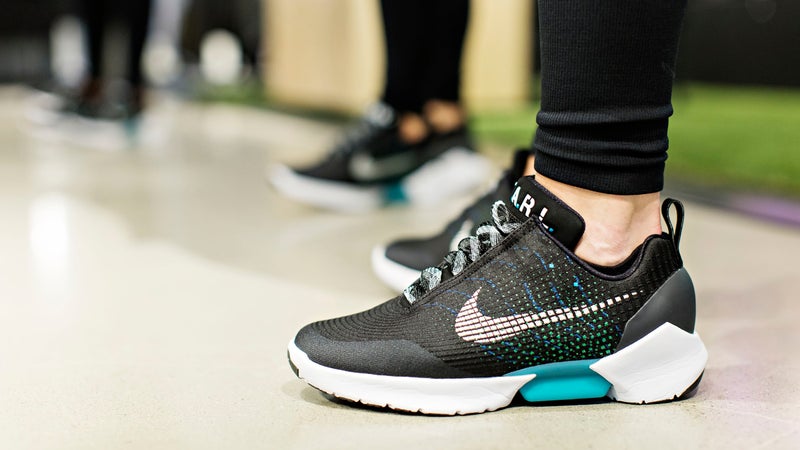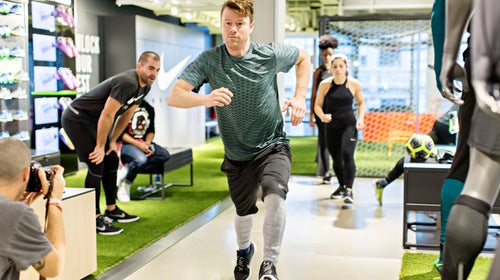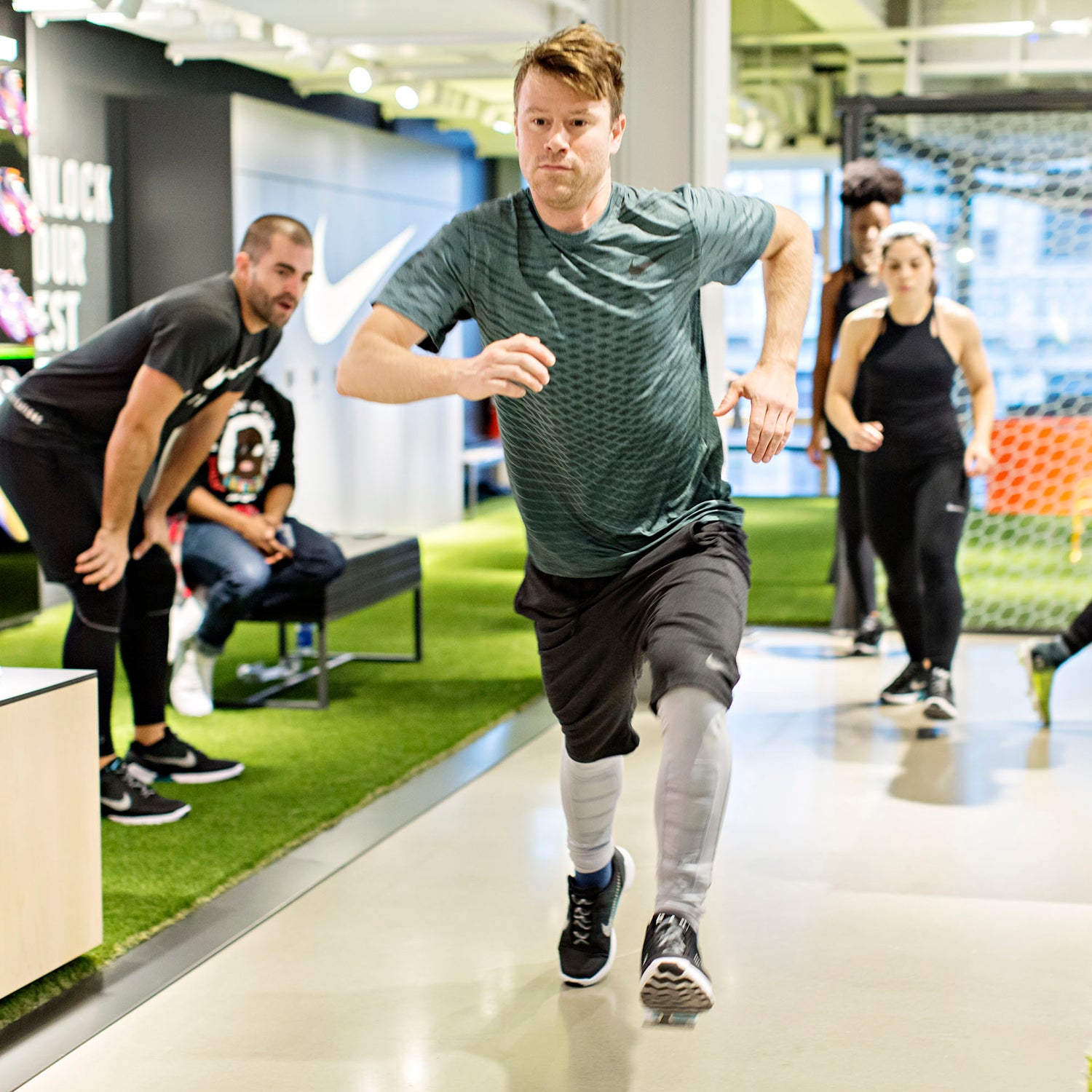Nike’s new self-lacing shoe, the , made headlines when it launched earlier this year. It works by triggering a heel sensor that activates a tiny, battery-powered motor nestled in the shoe’s undercarriage that pulls on the FlyWire upper to tighten until your foot is comfortably encased. You can then keep tightening, or tell it to back off, using two buttons on the shoe’s upper. The battery lasts up to two weeks and takes three hours to charge via a puck that connects to the bottom of the shoe.
Cool, yes, but we were left wondering whether the technology—Nicknamed E.A.R.L. for electro-reactive-adaptive-lacing—would make a real difference, or like Reebok’s “Pump Technology” and Puma’s “Disc” system, would get a lot of early hype and then fizzle out.

I got to test a pair earlier this month at Nike’s swank new 55,000 square-foot mega-store in lower Manhattan, and the quick answer is—I’m not sure. Yes, it was novel to step into the shoe, and just like Marty McFly in Back to the Future 2, have it immediately tighten around my foot. And I was struck by how comfortable and relatively lightweight the HyperAdapts felt, despite the technological wizardry built into their soles. Throughout the morning, I kept forgetting about what was on my feet, which is the ideal scenario for any pair of athletic shoes. That said, while using the shoe to play basketball and jog around the facility, I never felt the HyperAdapt 1.0 was preferable—in terms of comfort or functionality—to Nike shoes that cost less than the staggering $720 price tag.
Nike is up front about the fact that the technology will continue to develop. There’s lots of cool stuff yet to come. For example, their shoe design guru Tinker Hatfield envisions a world where the HyperAdapt would respond to your athletic needs without any human input. Theoretically, they would automatically create a less constrictive fit for easy jogging and a tighter fit for the quick, sharp cuts made on the basketball floor. Or, they could be designed to help people who might have a hard time reaching down to tie their shoes. As I felt the HyperAdapt adjust itself to the contours of my foot, I allowed myself to fantasize about being able to easily step into an auto-tightening ski or snowboard boot.
“Wouldn’t it be great if a shoe, in the future, could sense when you needed to have it tighter or looser?” Hatfield says. “That’s where we’re headed. In the future, product will come alive.”
Bottom line: I'm not ready to spend a month’s rent on these kicks, but if you’re an early adopter and need them now, the only way to buy a pair is by appointment at one of two New York City locations. .


